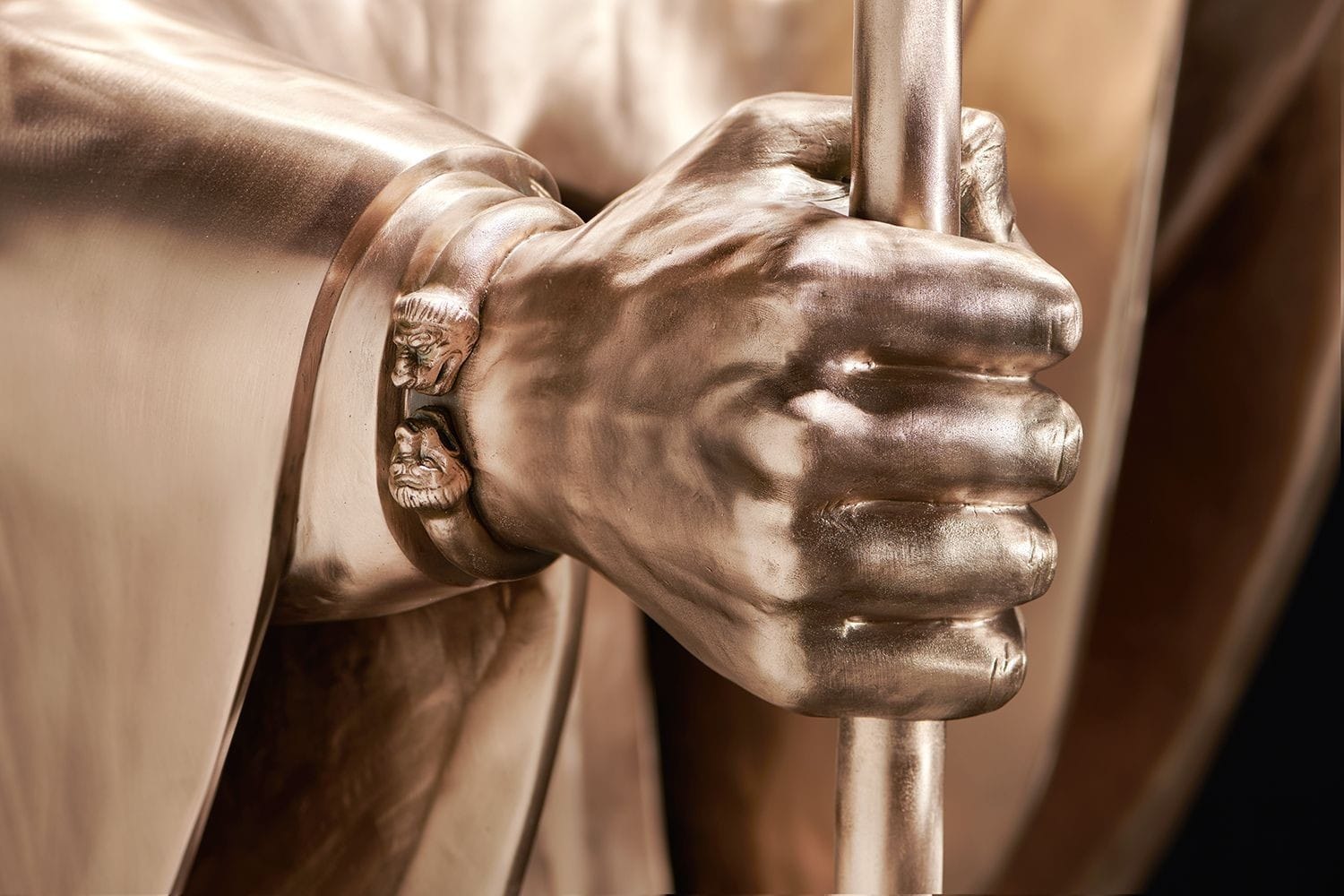Bronze Sculpture of Cyrus The Great
Bahram Zarin-afsar, AIA, NCARB, P.E. Architect . Sculptor
Centuries of persian / iranian values
Truth
human dignity
freedom
good thoughts
good words
good deeds
cyrus the great cylinder
CYRUS(KOUROSH) THE GREAT
Cyrus the Great (Cyrus II of Persia); Old Persian: Kūruš; Kourosh; New Persian: کوروش Kuruš; commonly known as Cyrus the Great, and also called Cyrus the Elder by the Greeks, was the founder of the Achaemenid Empire, the first Persian Empire (559-330 BC).
Under his leadership, the empire embraced all the previous civilized states of from the Mediterranean Sea and Hellespont in the west to the Indus River in the east, Cyrus the Great created the largest empire the world had yet seen.
He respected the customs and religions of the lands he conquered. This became a very successful model for centralized administration and establishing a government working to the advantage and profit of its subjects. In fact, the administration of the empire through satraps and the vital principle of forming a government at Pasargadae were the works of Cyrus.
Cyrus the Great is also well recognized for his achievements in human rights, politics, and military strategy, as well as his influence on both Eastern and Western civilizations. Having originated from Persia, roughly corresponding to the modern Iranian province of Fars, Cyrus has played a crucial role in defining the national identity of modern Iran. The Achaemenid influence in the ancient world eventually would extend as far as Athens, where upper-class Athenians adopted aspects of the culture of the ruling class of Achaemenid Persian as their own.
In the 1970s, The Great Shah of Iran M. R. Pahlavi identified his famous proclamation inscribed onto the Cyrus Cylinder as the oldest known declaration of human rights (6th Century B.C.) , and the Cylinder has since been popularized as such. The original is kept at british museum and a copy at the united nations.
Under his leadership, the empire embraced all the previous civilized states of from the Mediterranean Sea and Hellespont in the west to the Indus River in the east, Cyrus the Great created the largest empire the world had yet seen.
He respected the customs and religions of the lands he conquered. This became a very successful model for centralized administration and establishing a government working to the advantage and profit of its subjects. In fact, the administration of the empire through satraps and the vital principle of forming a government at Pasargadae were the works of Cyrus.
Cyrus the Great is also well recognized for his achievements in human rights, politics, and military strategy, as well as his influence on both Eastern and Western civilizations. Having originated from Persia, roughly corresponding to the modern Iranian province of Fars, Cyrus has played a crucial role in defining the national identity of modern Iran. The Achaemenid influence in the ancient world eventually would extend as far as Athens, where upper-class Athenians adopted aspects of the culture of the ruling class of Achaemenid Persian as their own.
In the 1970s, The Great Shah of Iran M. R. Pahlavi identified his famous proclamation inscribed onto the Cyrus Cylinder as the oldest known declaration of human rights (6th Century B.C.) , and the Cylinder has since been popularized as such. The original is kept at british museum and a copy at the united nations.
.jpg)
Video can’t be displayed
This video is not available.
Short Video

Video can’t be displayed
This video is not available.
ZOOM UNVEILING at CZC IN 2020
Unveiling Cyrus the Great Bronze Sculpture. Freedom and Law form Cyrus the Great to Thomas Jefferson.
.jpg)
Video can’t be displayed
This video is not available.
In person Unveiling at czc in 2021
Unveiling Cyrus the Great Bronze Sculpture. Freedom and Law form Cyrus the Great to Thomas Jefferson.